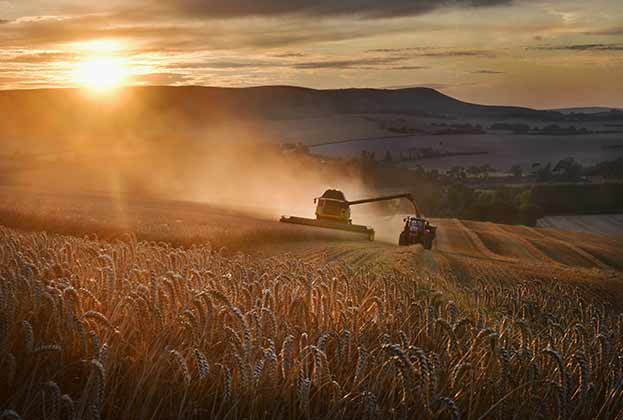In a previous blog 'Is seasonal food necessary?' there was no definitive answer although it was clear there are benefits to eating seasonally appropriate food. Recent challenges in the supply chain for many of our taken-for-granted salad vegetables are a good opportunity to look at changing some of our eating habits. Here are five steps to take to help transition to eating locally grown food in the correct season.
- Make a calendar. The sheer variety of seasonal produce can be confusing and overwhelming, especially when local, seasonal produce is mixed in with imported varieties on our shelves. Begin by making a simple calendar outlining what food becomes available in the UK in which months. This should not just be limited to fruit and vegetables but also meat and fish too. Certain foods can be produced throughout the year and should not be neglected, but check to see if there’s a point in the year when their quality is expected to be even better.
- Look at the labels. Armed with your knowledge of what food is produced when, head to your retailer of choice and seek out those items which you would expect to be in season. Most packaging will be labelled with their place of origin. If the food is loose (a great option to reduce plastic waste), the place of origin will likely be on the box.When you are looking at labels, look at the price too. Is it lower than usual? Maybe it is on a special offer. Seasonal food will flourish in the right season and so larger yields can be expected. Larger yields will mean larger overall volumes and that can serve to drive the cost down for consumers at certain points in the year. In this way, seasonality can be one tool in the battle against the cost of living crisis too.
- Change where you shop. We are not talking about swapping one supermarket for another, but seeking out those retailers that stock locally-produced seasonal food. This might be a local butchers, greengrocers or a farm shop. Local retailers do not have the purchasing power of big supermarkets and so costs might increase here. If that is a problem, consider shopping at these local retailers for just one meal a week, like a traditional Sunday roast. As well as better taste and improved nutrition, you can be reassured the extra cost is going into the local economy and helping those within the community.
- Do it yourself. Growing your own vegetables is a big step but could yield huge benefits beyond enhanced taste and nutrition. A 2017 study by the University of Tokyo concluded that gardening has repeatedly been shown to be beneficial to human health in a wide range of instances. Reductions in depression and anxiety symptoms, stress, mood disturbance, and BMI, as well as increases in quality of life, sense of community, physical activity levels, and cognitive function have all been demonstrated.
Our Spotlight on Controlled Environment Horticulture shows renting an allotment plot for a whole year could cost less than your weekly shop. To begin growing your own food, create a suitable site in a garden or allotment and add planting dates for desired crops to your calendar. Stick to those dates to create a cycle of food production throughout the year. Even if you cannot access a plot of land, windowsills or conservatories can make excellent locations for growing herbs and spices. - Too much of a good thing Growing your own can lead to an abundance of food when harvesting. Store in a cool, dry, well ventilated location to extend the life of food in the first instance. Growers may wish to share that food with friends and family or alternatively, could preserve certain foods to consume at other points in the year. Pickle beetroot or onions and transform spare fruit into jams and conserves. Certain foods like cabbage can be transformed into unique dishes like kimchi or sauerkraut.

.jpg)
.jpg)



.jpg)
.jpg)
.jpg)
.jpg)
